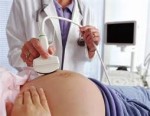Study Reveals Childbirth Complications May Vary by Hospital
According to a recent study conducted by University of Rochester researchers, a woman’s chance of experiencing childbirth complications may vary according to the hospital where she gives birth. Approximately four million women give birth in the U.S. each year and nearly 13 percent of them suffer at least one complication.
Researchers found that complications during childbirth may vary up to five times between US hospitals – 21 percent compared to 4.4 percent. Additionally, women who delivered their babies at low-performing hospitals were two times as likely to experience complications ─ 22.6 percent versus 10.4 percent. Consequently, the team believes a national quality reporting system needs to be created to improve childbirth outcomes.
The research team based their ratings of the low, average, or high performing on a calculation of the relative risk that a patient would suffer a major complication.
“The key finding is that there is significant variability in maternal outcomes across US hospitals,” says lead author Laurent G. Glance, health outcomes researcher and vice-chair for research in anesthesiology at University of Rochester School of Medicine and Dentistry. “This presents us with an opportunity to identify ‘best practices’ at hospitals with low rates of maternal complications in order to improve outcomes for patients in all hospitals.”
Platform created for measuring childbirth complications
The American Congress of Obstetricians and Gynecologists joined forces with the American Society of Anesthesiologists to develop a platform for measuring and reporting benchmarking information on the outcomes of childbirth. Researchers believe this could be an effective way to improve maternal outcomes in the U.S.
The study was published in the journal, Health Affairs, and analyzes 750,000 different childbirth deliveries in the 2010 Healthcare Cost and Utilization’s Nationwide Inpatient Sample.
Glance says he still regards the findings as preliminary as they’re centered on statistics that lack details on possibly critical risk factors. It’s also important to note that while many of these complications are serious, very few are actually life-threatening.
Childbirth makes up an overwhelming 25 percent of hospital discharges, totaling $100 billion in 2008.
Data can help improve childbirth outcomes
High-Risk Obstetrician J. Christopher Glantz, says there’s a huge value in having this data to measure the widely known discrepancies in practice and the effect on childbirth outcomes. As a co-author of the paper working on an American College of Obstetricians and Gynecologists plan to decrease pregnancy-related fatalities from thromboembolism, severe hypertension, and hemorrhaging during pregnancy and childbirth in the State of New York.
“In the OB field, individual practice styles, training, and anecdotal experience shape how we practice, but we didn’t expect to see such wide differences in maternal outcomes, which is all we studied here,” Glantz says.
“For the most part babies and the mothers do well, but we can do even better by studying the hospitals that perform well and following their best practices.”
A number of other researchers from the State University of New York at Albany, Rand Corp., Uniformed Services University of the Health Sciences, and the University of California at Irvine also contributed to the study.



